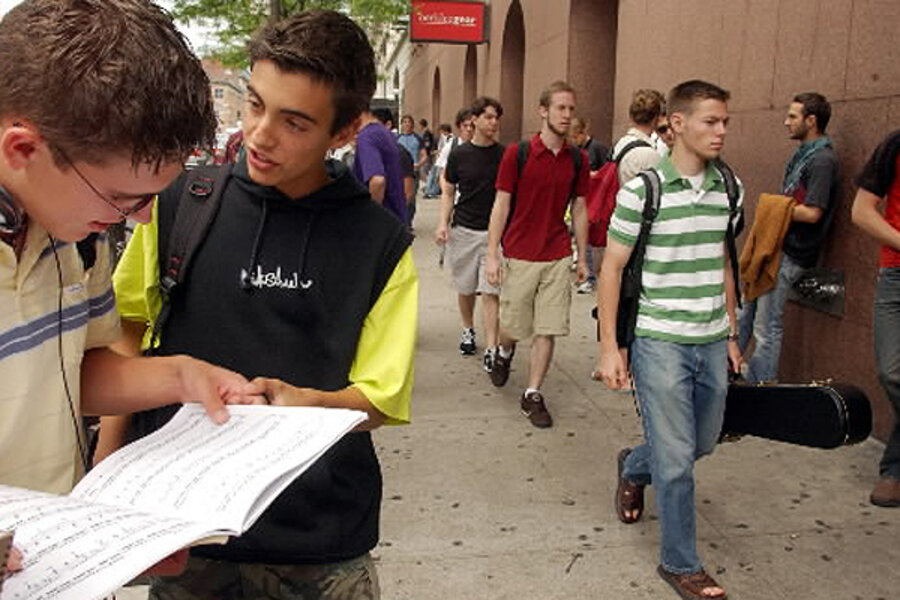US colleges, especially in Midwest, see record number of foreign students
Loading...
| Washington
When it comes to foreign students, most college officials prefer to emphasize the international flavor and cultural enrichment that they bring to America’s schools.
But in an era of generally falling public funding for universities, there’s no denying the economic benefits of America’s booming foreign-student population.
In its annual Open Doors Report on trends in international college education, the Institute of International Education (IIE) cites the Commerce Department in claiming that foreign students – who came to the United States in record numbers in 2011 – contribute nearly $23 billion annually to the US economy.
And state officials from California to Indiana acknowledge that, with state legislatures cutting back on university budgets, in-state tuitions would be rising even faster if not for the fast-growing number of foreigners on America’s campuses.
How fast? Foreign enrollment was up almost 6 percent last year, to 764,495 – a nearly one-third jump over the past decade. Last year marked the sixth year in a row of increases in foreign students in the US, after several years of decline in the years just after 9/11.
Where do the foreign students come from? China sends the most, at 158,000, followed by India, South Korea, Saudi Arabia, and Canada. Saudi Arabia, with a 50 percent jump over the previous year, had the largest increase, thanks to a substantial new government scholarship program.
On the other hand, a growing number of China’s students in the US are being sent by families with the newfound financial ability to pay for an overseas university education. A growing number of those Chinese students are coming as undergraduates.
And where are these international students enrolling? California is still the top destination by state, and New York City is the top urban magnet. But one trend that this year’s Open Doors Report reveals is a growing interest among foreigners in the American Midwest.
Large state universities in Michigan, Illinois, Ohio, and Indiana figure in the list of the top 20 schools with the highest international enrollment, with Indiana racking up a 10 percent increase in international students over the previous year – to 22,194 – the largest percentage increase of any state.
Indiana University in Bloomington is a good example of the transformation taking place in many large Midwestern universities – accommodating not just more international students overall, but many more foreign undergraduates. Five years ago, Indiana had less than 100 undergraduate Chinese students, but that number has skyrocketed to more than 2,200, out of some 6,100 total Chinese students.
The Open Doors Report also offers a snapshot of American students studying abroad. The report shows a slowing increase, with last year’s number – 273,996 – up 1.3 percent over 2010.
Still, the IIE points out, the number of US students overseas has tripled in the past two decades – another significant factor in America’s growing exposure to the globalizing economy.








